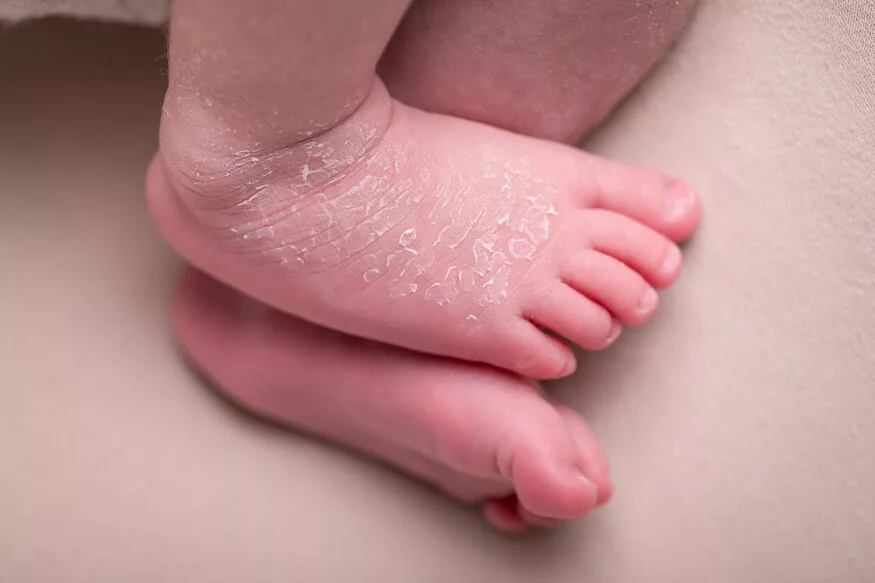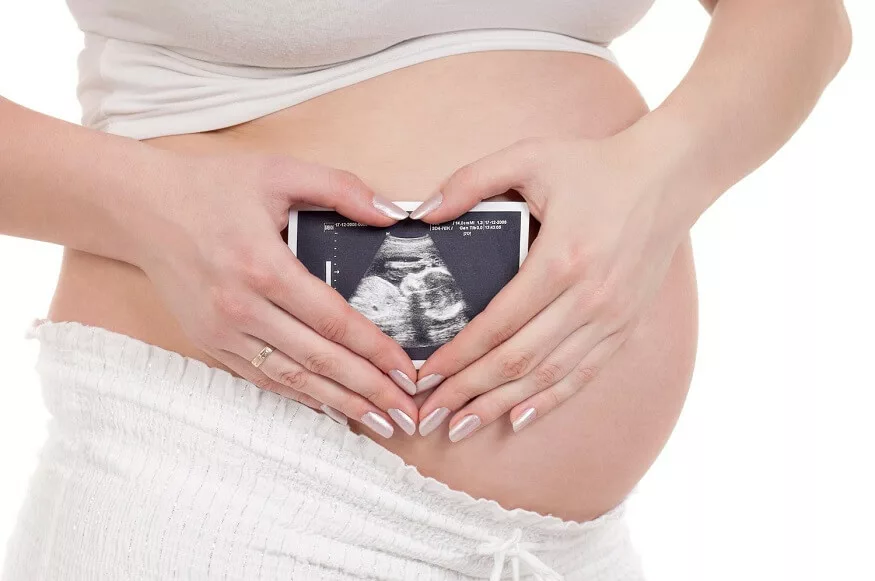The arrival of a newborn not only brings boundless joy but also ushers in a myriad of questions and concerns, especially concerning the inherently delicate nature of a baby’s skin. The beauty and intricacy of this new life evoke a sense of wonder, but it’s often accompanied by apprehensions, with one prevalent worry revolving around the natural phenomenon of newborn skin peeling.
We shall examine the various causes of this phenomenon in detail in this investigation, piecing together the complex web of variables that affect the sensitive process of skin growth. Our goal is to give parents and other carers a comprehensive understanding of the normal course of newborn dry skin peeling, rather than just superficial information.
Understanding Newborn Skin Peeling:
1. Natural Process of Skin Development
The journey of newborn skin is nothing short of a marvel. It undergoes a meticulous process of adaptation to the external environment it encounters for the very first time. Shedding the vernix caseosa, a protective waxy substance enveloping the baby during gestation, is a crucial facet of this intricate process. This shedding not only allows the skin to breathe but also facilitates adjustment to the new atmospheric conditions.
2. Timeframe:
Newborn skin peeling usually occurs in the first weeks after birth, reflecting a natural phase in a baby’s skin development. It’s crucial to recognize that each baby’s skin undergoes this shedding at its own pace, embracing its individuality. This variation in timing underscores the uniqueness of each newborn’s skin journey, providing parents with a reminder of the distinct characteristics and adaptability of their precious little one.
3. Genetic and Ethnic Factors:
Exploring the nuances of genetic influence on a newborn’s skin reveals how familial traits contribute to variations in the peeling process. Similarly, the role of ethnic backgrounds emphasises the diversity in skin types and their responses to environmental factors.
4. Environmental Influences on Newborn Skin:
External factors like climate, temperature, and humidity play a pivotal role in determining the degree and duration of newborn dry skin peeling. Offering practical advice, parents can adapt their skincare routines to these specific environmental conditions, ensuring optimal comfort and sustained skin health for their newborn.
Also Read: Gentle And Safe – Expert Tips For Moisturising Your Baby’s Skin
Causes of Newborn Skin Peeling:
1. Hormonal Changes:
The delicate canvas of a baby’s skin is intricately woven with the influence of maternal hormones during the gestational period. As these hormonal levels naturally diminish post-birth, it is entirely normal for the baby’s skin to undergo a phase of gentle peeling. Understanding the causes of infant skin peeling sheds light on the intricate processes that contribute to the transition from the protective environment of the womb to the external world.
2. Amniotic Fluid Exposure:
While cocooned in the protective embrace of amniotic fluid within the womb, a baby’s skin is shielded from the outside world. However, the transition to the external environment post-birth triggers a change that results in dryness and subsequent peeling. Exploring the causes of infant skin peeling deepens our awareness of the impact of this transition on the infant’s delicate skin.
3. Dry Skin:
Newborns, in their nascent stages, possess underdeveloped oil glands, rendering them particularly susceptible to dry skin. Consequently, ensuring adequate hydration becomes a paramount consideration in maintaining the optimal health of the baby’s delicate skin. Recognizing the causes of newborn skin peeling underscores the importance of proactive measures to prevent infant skin peeling, promoting overall skin well-being.
Also Read: Baby’s Skin Rash – Causes, Treatment & Prevention Tips
Newborn Skin Peeling Treatment and Care:
Newborn skin peeling treatment and care are essential components of nurturing a baby’s delicate skin.
- Gentle Cleansing:
Choosing mild, fragrance-free cleansers designed specifically for newborns is paramount for maintaining skin health. It’s equally vital to exercise caution against excessive bathing, as this mindful approach acts as a protective measure, preventing any potential escalation of dryness.
- Moisturising:
Following a soothing bath, the application of a hypoallergenic, fragrance-free moisturiser, purposefully formulated for newborns, transforms into a cherished nurturing ritual. This deliberate step not only contributes to the skin’s suppleness but also imparts a velvety soft texture, ensuring comfort for the baby.
- Avoiding Irritants:
In the holistic pursuit of comprehensive care, educating parents about potential irritants becomes imperative. This educational aspect extends to the avoidance of harsh soaps, detergents, or rough fabrics, while actively promoting the use of gentle, hypoallergenic products and fabrics for clothing and bedding.
Such conscientious choices add an extra layer of protection to the baby’s delicate skin, promoting an environment conducive to the prevention of diaper rash and effective skin-peeling treatment.
Also Read: Things to look out for best Baby Wipes for All Skin Types
Diaper Rash Skin Peeling Treatment:
Diaper Rash Prevention:
Emphasising the significance of frequent diaper changes and maintaining meticulous hygiene practices is essential in fostering a protective environment for a baby’s delicate skin. Additionally, incorporating the regular use of barrier creams or ointments provides an extra layer of defence, safeguarding the baby’s skin against potential irritants. This proactive approach not only aids in preventing diaper rash but also contributes to effective diaper rash skin peeling treatment.
Diaper Rash Treatment:
In the event of diaper rash, it becomes imperative to recommend the use of creams or ointments containing zinc oxide. This, coupled with the meticulous upkeep of cleanliness and dryness, forms a robust and comprehensive strategy for the effective treatment of diaper rash and skin peeling. Parents can find reassurance in adopting these measures, ensuring the optimal health and comfort of their baby while addressing the dual concern of diaper rash skin peeling treatment.
Also Read: Cloth vs Disposable Diapers For Kids: Pros and Cons, Tips For Parents
Acquiring a nuanced understanding of the causes of newborn dry skin peeling is paramount for concerned parents. Embracing the intricate natural process of skin development, implementing gentle cleansing routines, moisturising effectively, and adopting preventive measures against diaper rash collectively contribute to ensuring that your baby’s skin not only withstands the transient phase of peeling but thrives with optimal health. Always bear in mind that, should concerns persist or worsen, consulting a healthcare professional is a prudent step to ensure the ongoing well-being of your little one’s exquisitely delicate skin.
EuroSchool emphasises the importance of understanding the timeframe and individual variations in this phase, fostering a sense of reassurance for parents. Additionally, the article offers practical guidance on infant skin peeling treatment, covering gentle cleansing with mild, fragrance-free cleansers, moisturising using hypoallergenic products, and avoiding irritants to ensure optimal skin health.











